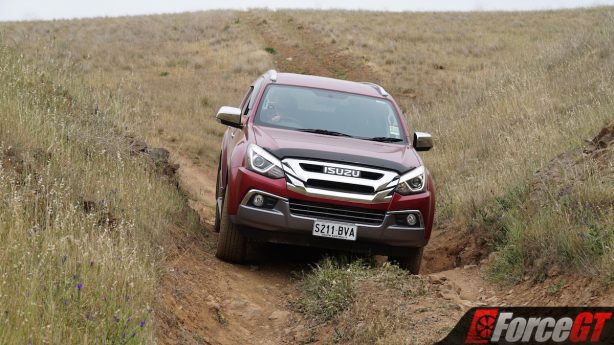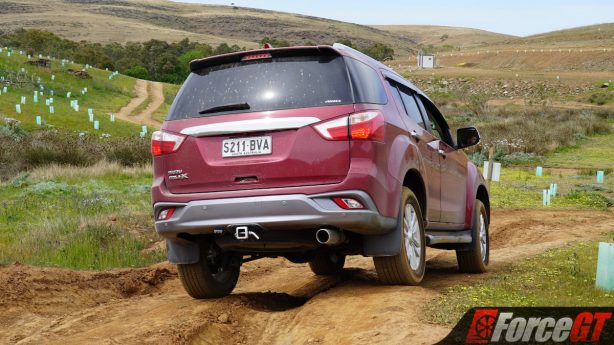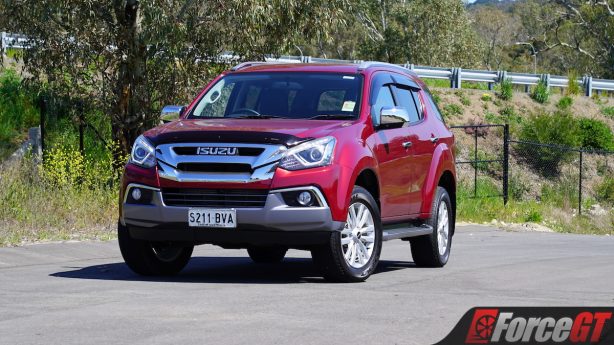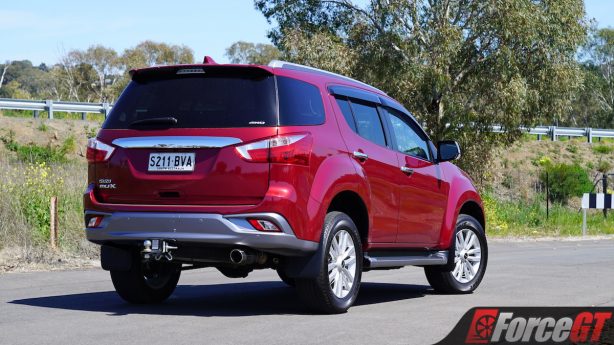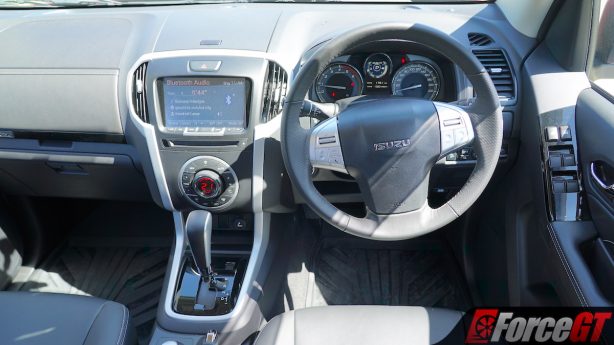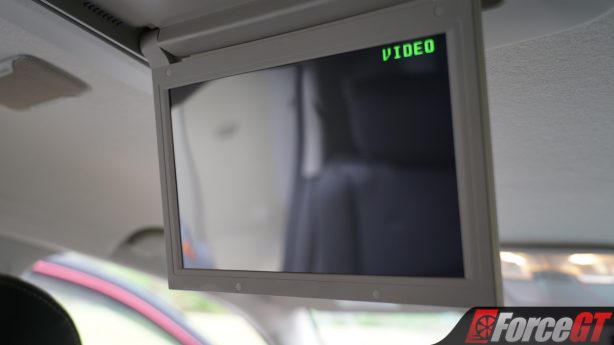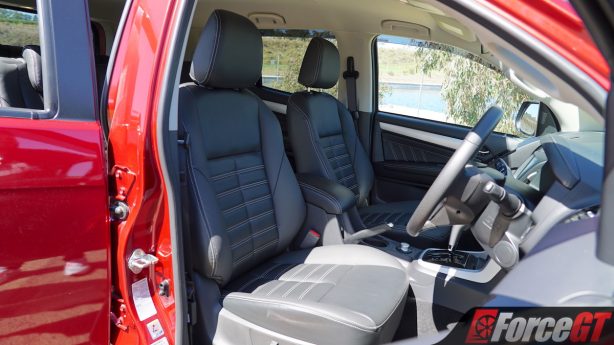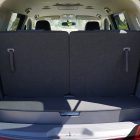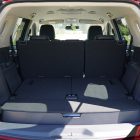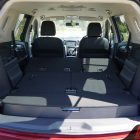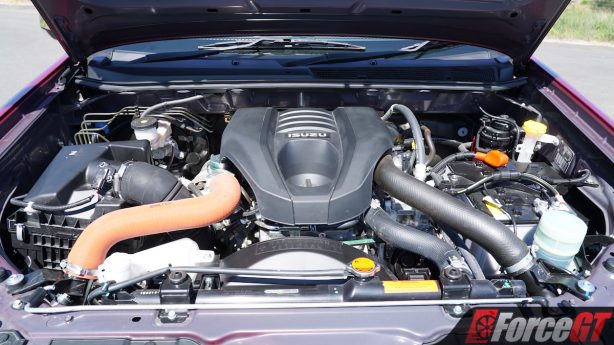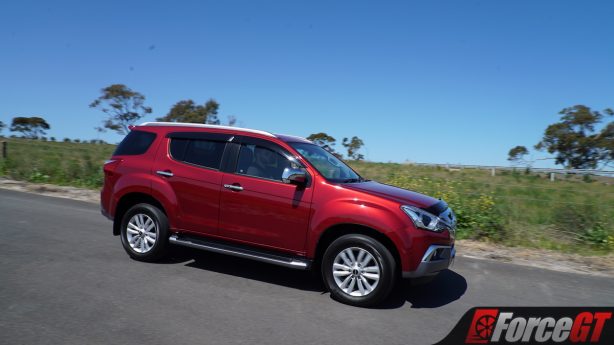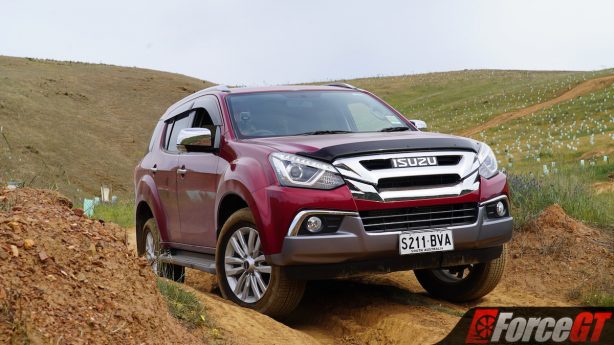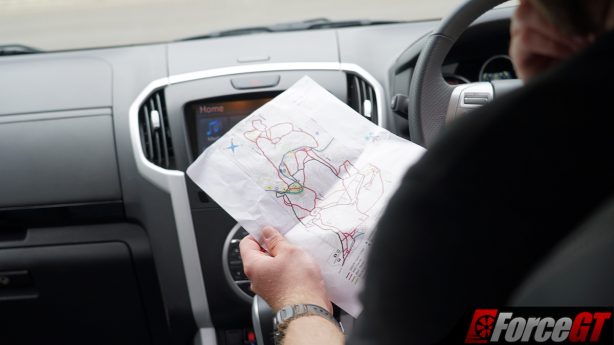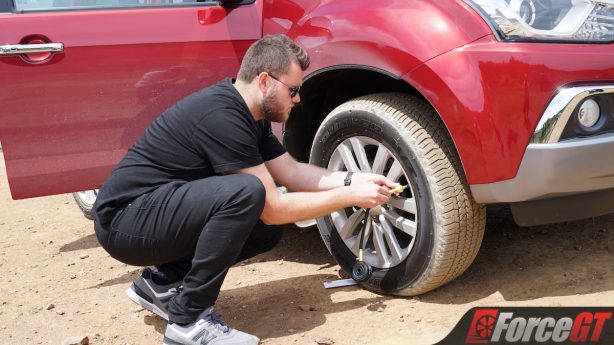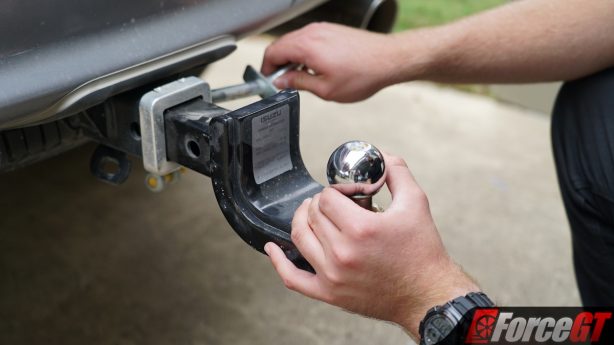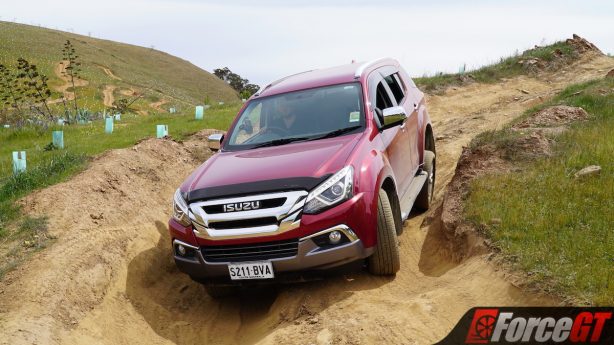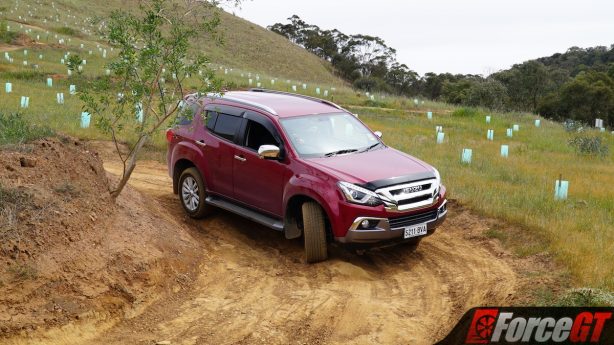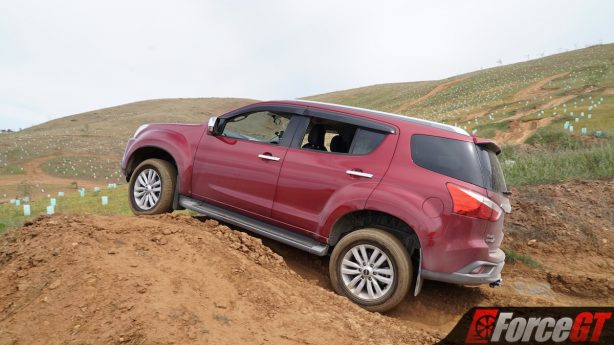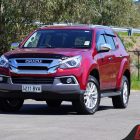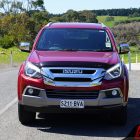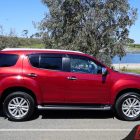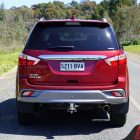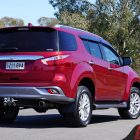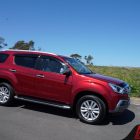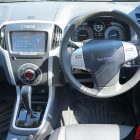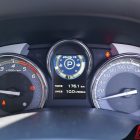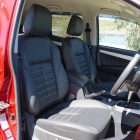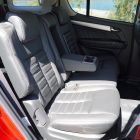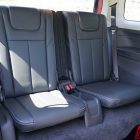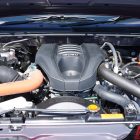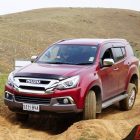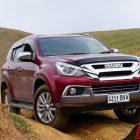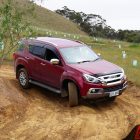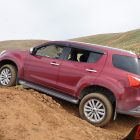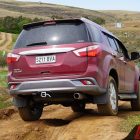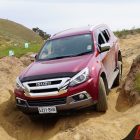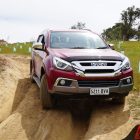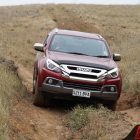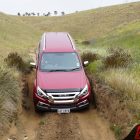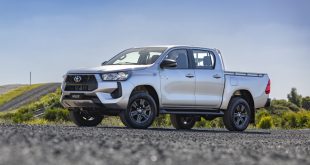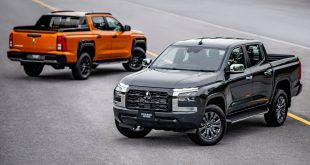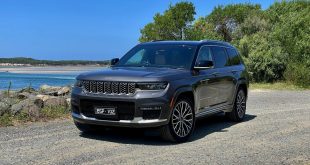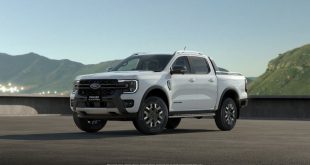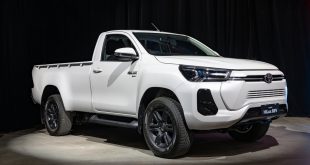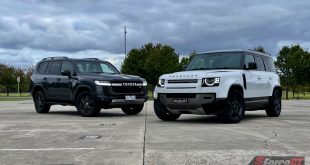Over the course of the last ten years, Isuzu UTE Australia has proven itself to be the plucky little company that could go toe-to-toe with the biggest names in the biz with just a two model offering.
The seven-seat Isuzu MU-X is the best example of this out of the two, as it has proven to be a truly dominant force in the body-on-frame SUV segment outselling everything bar the household name Toyota Prado.
Those who own them absolutely love them, and they’ve made a reputation for themselves as a simple but robust and reliable family bus with decent off-road chops and competitive permanent drive-away pricing.
The humble MU-X is now getting on in years, however, having first hit our shores in late 2013 with a string of minor tweaks and updates along the way since.
So to see how it’s holding up after five years and whether it deserves to be as popular a choice as it is, we spent two weeks with the range-topping LS-T 4×4 variant and put it through its paces over the course of 1,100km.
On the outside
Over the years, the tweaks to the MU-X’s styling have certainly paid off, as the big brute is looking its best yet at the moment. That’s not to say it’s the best-looking car out there and it’s certainly not for everyone – one friend of mine noted that she wasn’t a fan of its angry headlights and snarling grille at all – but it certainly does look purposeful.
Our test car was dressed up with a few options in the way of front and rear weather-shields, a bonnet protector, and the tow bar kit that I think added to its looks nicely. The Magnetic Red Mica paintwork of our car – a new colour for 2018 – was particularly stunning as well, and replaces Havana Brown Mica as my personal favourite colour for it.
To differentiate the range-topping LS-T from bottom-rung variants, it sports a set of simple but fitting 18-inch alloys along with a chromed exhaust tip as standard, although you’ll be hard pressed to spot the difference between the LS-T and the step-down LS-M from the outside alone.
On the inside
Up front, things are largely identical to what you’ll find in the D-Max ute, with a shared dashboard design that is simple and incredibly functional. There’s storage galore with dual gloveboxes and assorted trays and cubby holes, along with some very handy pull-out cup holders.
The gauge cluster is largely identical spare for the silver patterned background of the dials, while the eight-inch infotainment system is identical to that of the range-topping D-Max. As a result, two complaints we had about that carry over to this – there’s no digital speedo, which is a big omission in a country with road policing as strict as ours, and the infotainment system is rather dated.
Also dated, but rather neat for those with younger children, is the roof-mounted ten-inch DVD player screen in the back which will keep the kids entertained on long drives. The ‘Sky Sound’ surround sound system that utilises speakers in the roof does help to provide somewhat of a cinema-like experience for those in the back.
Cabin space is very good for the first and second rows, with incredibly comfortable leather seats with white contrast stitching and softly-padded armrests, along with additional stitched leather on the door cards.
However, as second-row seats aren’t on rails, third-row passengers will need to be shorter in the leg than I am to fit there comfortably, although some adults could probably get by back there for shorter trips if necessary.
Both the second and third rows do fold completely flat, however, allowing for up to 1,830 litres space, although with the third row in place, boot space is incredibly limited.
Under the skin
Under the MU-X’s ornamented bonnet lies the same 3.0-litre four-cylinder turbo diesel that you’d find in Isuzu UTE Australia’s other offering, the closely-related D-Max. Derived from Isuzu’s N-series trucks, the big oiler makes 130kW and 430Nm – both respectable outputs – along with making a big song and dance about it. It’s one noisy engine, there’s no doubt about that, although it is less audible in the cabin of the MU-X than the D-Max, thanks to additional sound deadening on the firewall.
As mentioned in our review of the D-Max, which you can read here, it’s an engine that, while rough around the edges, is famed for its durability and reliability, and you certainly get that impression from it.
Backing this robust engine is an Aisin six-speed automatic transmission that was introduced as part of the 2017 update, with the power sent through there to a dual-range transfer box with selectable four-wheel drive.
While it is based upon a ladder frame chassis, it is a shorter platform than that of the D-Max – the MU-X’s wheelbase is 250mm shorter – while it also sports coil springs for its live rear end, as opposed to the firmer leaf springs of its dual-cab cousin.
On the road
The first thing that hits you when you get behind the wheel of the MU-X – after the gruff engine noise – is just how smooth it is to drive. For one, the engine’s power delivery is very predictable with a wide spread of torque across the rev range, and the auto box backing it swaps cogs unobtrusively too. And while the old-school hydraulic power steering it utilises is very much on the heavier side and is a tad slow, it is at least pleasantly communicative on the tarmac and very smooth as well.
But nothing is as smooth as the MU-X’s ride, which is the best part of the way it drives. While softly sprung, it never feels too floaty or removed from the road, and it’s about as comfortable as a coil-sprung body-on-frame four-wheeler can be – at least at this end of the market.
Admittedly, there is a bit of body roll through some of the tighter corners that litter our test routes, but on roads with longer sweeping bends it holds its ground more impressively, with the responsive steering helping you hold your line firmly.
Other than the slight drone of the engine in the background when on the throttle, it does remain relatively quiet on the open road, with very little road or wind noise to be detected. I must also give it credit for having the most accurate cruise control of any car I’ve driven recently when it comes to holding its speed up and down hills, which only makes longer drives even less stressful.
Although we didn’t get a chance to do any towing with it this time around, I can cite past experience of towing a friend’s problematic Nissan 300ZX with the 2017 model just over a year ago to tell you that it makes for a solid tow car too, thanks to the low-end torque on offer.
Off the road
To really give the MU-X an off-road workout, we took it to the gruelling JAKEM Farm near Callington on the eastern slopes of the Adelaide Hills. The property consists of a main loop around most of the property with varied tracks running through the middle that include plenty of rock-crawling and water crossings, amounting to around 50km of trails in total.
There’s also a beginners’ training course right at the entrance, and since it had been well over a year since I’d been out there last in a vastly different Jeep Wrangler – and since we wanted to figure out the MU-X’s strengths and weaknesses before we hit the main loop – we took to the beginners section first.
Before that, however, we needed to do a quick bit of prep work – the towbar had to come off to improve our departure angle and avoid damaging it, while the Bridgestone Dueler highway-terrain tyres were aired down to 20psi, although it should be noted that with all-terrain or dedicated off-road tyres you’ll want to lower your pressures even further to around 16-18psi.
Sticking it into low range but leaving the transmission in drive, we set off without any real drama. That is, until about thirty seconds in when a tight uphill S bend immediately highlighted what would be the biggest obstacle to overcome of the day, which was the MU-X’s breakover clearance due to its low running boards down either side – both of which were inflicted with some dings and scratches from rocks jutting out mid-corner. (Sorry, Isuzu!)
Its approach and departure angles proved to be fine, however, with only the low-hanging front number plate of all things getting caught on one particularly steep downhill gradient. Do keep in mind though that most folks who trek out to Jakem Farm have fitted lift kits to their vehicles for this exact reason, and it must be said the MU-X did commendably well for something completely stock.
And other than the odd clearance issue due to something tacked onto it, the MU-X struggled with nothing we threw at it – even on road-biased tyres it never struggled for traction, and the low-end torque the big oiler produces was able to be effectively utilised thanks to the low range gearing.
The only thing I found to cause any concern is the slow steering which is nearly four turns lock-to-lock, and while at times it’s good how finely you can adjust your line, it is easy to lose track of exactly where you’ve got the wheels pointed, especially with somewhat limited visibility. Other than that though, there’s little to criticise.
Verdict
Design & Comfort
Performance & Handling
Quality
Economy
Equipment & Features
OUR SCORE
3.9/5
+ Plus
- Outstanding ride comfort
- LS-T’s plush leather trim lifts cabin quality
- Very capable off-road
– Minus
- Slow, heavy steering with too many turns lock-to-lock
- Dated infotainment system
- No digital speedo
Overall
The MU-X might be a bit on the basic side, but it is refreshingly simple and honest, and it has just enough extra trimmings in LS-T guise to help justify the price tag, and to keep the whole family happy.
But what impressed us most was its incredibly comfortable ride that makes it a perfect long-distance cruiser, and its rugged off-road ability that saw it struggle with next-to-nothing when we threw it at the toughest off-road course we could find.
It’s an excellent all-rounder, if a little dated and basic, and a car that has definitely earned its keep after five reliable and successful years.
2019 Isuzu MU-X LS-T pricing and specs
| Price (excluding on-road costs): | From: $56,200.00 As tested: $59,113.40 Tested options:
|
| Warranty: | 5 years/130,000km |
| Warranty Customer Assistance: | 5 years roadside |
| Service Intervals: | 12 months/15,000km |
| Country of Origin: | Japan (Built in Thailand) |
| Engine: | 3.0-litre turbocharged common rail direct-injection four-cylinder diesel: 130kW @ 3,600rpm, 430Nm @ 2,000-2,200rpm |
| Transmission: | 6-speed automatic |
| Drivetrain: | Four-wheel drive, dual-range |
| Power-to-Weight Ratio (W/kg): | 60.3 |
| 0-100km/h (seconds): | N/a |
| Combined Fuel Consumption (L/100km): | Claimed: 7.9/Tested: 10.1 |
| RON Rating: | Diesel |
| Fuel Capacity (L): | 65 |
| Body: | 5-door SUV, 7-seats |
| Safety: | 5-star ANCAP, 6 airbags, ABS, EBD, BA, VSC, Hill Descent Control, Hill Start Assist, Trailer Sway Control, rear-view camera, ISOFIX |
| Dimensions (L/W/H/W-B): | 4,825/1,860/1,860/2,845 |
| Boot Space (min/med/max) (L): | 235/878/1,830 |
| Turning Circle Between Kerbs: | 11.6 |
| Ground Clearance: | 230 |
| Wading Depth: | N/a |
| Approach Angle: | 24.0 |
| Departure Angle: | 25.1 |
| Breakover Angle: | 19.5 |
| Kerb Weight (kg): | 2,157 |
| Towing Capacity (kg): | Braked: 3,000/Unbraked: 750 |
| Entertainment: | 8-inch colour touchscreen, satellite navigation, AM/FM, Bluetooth, USB, HDMI, AUX, CD/DVD, iPod 8-speaker ‘Sky Sound’ roof-mounted surround sound system 10-inch roof-mounted DVD entertainment monitor |
Competitors: Holden Trailblazer, Toyota Prado, Mitsubishi Pajero Sport, Ford Everest, Haval H9, Toyota Fortuner, Kia Sorento, Hyundai Santa Fe, Toyota Kluger, Mazda CX-9
Photos by Justin Cribbes.
 ForceGT.com Car News, Car Reviews, Video Reviews, Tuning and much more.
ForceGT.com Car News, Car Reviews, Video Reviews, Tuning and much more. 